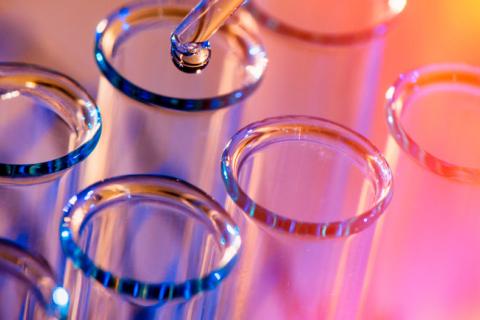
Photopharmacology consists of the treatment of diseases with drugs composed of molecules that are activated and controlled by light and provides new opportunities to create personalized therapies to combat pathologies such as cancer. Now, a group of Spanish researchers from the Institute for Advanced Chemistry of Catalonia (IQAC) of the Higher Council for Scientific Research (CSIC) have developed in vitro a series of photosensitive molecules that can be activated and deactivated by external light and would allow a more localized effect. and controlled use of drugs, increasing their effectiveness.
One of the challenges facing medicine in the treatment of cancer is that the drugs used are often not able to fully differentiate cancer cells from healthy cells and this not only reduces the effectiveness of chemotherapy, but also causes adverse effects that deteriorate the health of the patient.
“Photosensitive drugs, whose activity can be precisely controlled with external light in a reversible manner, can solve this problem, since they provide great control of the site of action and for a desired time, thus reducing side effects and increasing their efficacy. ”, explained Laia Josa Culleré, a researcher in the IQAC’s Medicinal Chemistry and Synthesis group, and lead author of the study that has enabled the design of these molecules and whose results have been published in the Journal of Medicinal Chemistry.
Photosensitive drugs that only attack cancer cells
The structure of the photosensitive molecules varies when they are illuminated under certain light conditions –adjusting parameters such as wavelength, intensity and exposure time–, which may allow external control of the therapeutic effect of the drug and its antitumor activity. more accurately. “To date, this type of drug is in the experimental phase for applications in the retina or pain, but for now there are not many studies with good results in oncology,” says Laia Josa Culleré.
Photosensitive molecules whose activity can be controlled by external light may prevent the side effects of anticancer drugs and improve their efficacy
The new research focused on a common target in oncology, histone deacetylase (HDAC) enzymes, which when misregulated prevent the expression of certain genes, such as tumor suppressors, and make cells more likely to become cells. cancerous. For this reason, numerous drugs are being developed to inhibit the misregulated HDACs to stop the progression of this disease.
Although there are already drugs that act on these enzymes, they have low selectivity and toxic effects, and therefore the goal of the researchers was to design molecules based on these conventional drugs, but that could be reversibly regulated by light in order to control their activity. changing lighting conditions.
The researchers found that when these molecules were activated by light, they inhibited HDACs, something that did not happen when they remained inactive in the dark. Since the first molecules developed were only activated by ultraviolet light – which can damage cells and does not penetrate deep enough into biological tissues – they were modified to activate by green light (visible light) and their results were improved under illumination.
They then tested how these molecules worked in four cancer cell lines: cervix, breast, leukemia and colon, and observed that there was an increase in the death of cancer cells after illumination with green light and that when they were kept in the dark they had no effects. “One of the strengths of the study is that these molecules have been able to activate with visible light (green), while almost all the molecules that are described against cancer are activated with ultraviolet light, which is less effective, and limits the approach to tests in vivo and in patients”, highlights Amadeu Llebaria, head of the IQAC Medicinal Chemistry and Synthesis group.
Based on the results of the study, the team of scientists has developed a small library of photosensitive molecules that allow cell viability to be monitored only when illuminated with visible light, which is less damaging to cells. It is hoped that in the future it will be possible to study the effect of these molecules in vivo, in zebra fish or mice, selectively illuminating the tumor area to activate the drug, while in the rest of the body it is kept in its inactive form to avoid side effects. adverse in healthy tissues.
“We believe that the study of these photosensitive molecules is important in order to establish an in vivo proof of concept on the use of photopharmacology to treat cancer more effectively and safely”, concludes Josa Culleré.
Source: Institute of Advanced Chemistry of Catalonia (IQAC) of the Higher Council for Scientific Research (CSIC)
.